
The Kalevala is a 19th-century work of epic poetry compiled by Elias Lönnrot from Karelian and Finnish oral folklore and mythology, telling an epic story about the Creation of the Earth, describing the controversies and retaliatory voyages between the peoples of the land of Kalevala called Väinölä and the land of Pohjola and their various protagonists and antagonists, as well as the construction and robbery of the epic mythical wealth-making machine Sampo.
Finnish mythology is a commonly applied description of the folklore of Finnish paganism, of which a modern revival is practiced by a small percentage of the Finnish people. It has many features shared with Estonian and other Finnic mythologies, but also shares some similarities with neighbouring Baltic, Slavic and, to a lesser extent, Norse mythologies.
Hiisi is a term in Finnic mythologies, originally denoting sacred localities and later on various types of mythological entities.

Väinämöinen is a demigod, hero and the central character in Finnish folklore and the main character in the national epic Kalevala by Elias Lönnrot. Väinämöinen was described as an old and wise man, and he possessed a potent, magical singing voice.
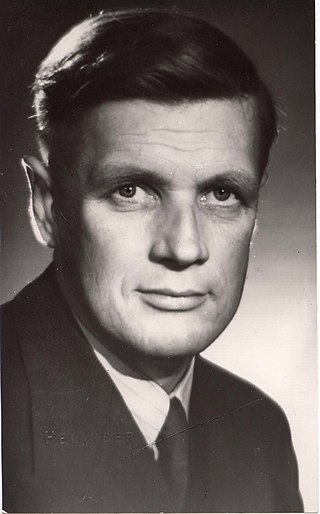
Uuno (Kalervo) Klami was a Finnish composer of the modern period. He is widely recognized as one of the most significant Finnish composers to emerge from the generation that followed Jean Sibelius.
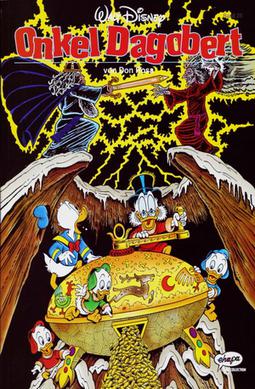
"The Quest for Kalevala" is a 1999 Uncle Scrooge comic book story written and drawn by Don Rosa. The story was first published in the Danish Anders And & Co. #1999-48; the first American publication was in Uncle Scrooge #334, in October 2004.

The tone poem Pohjola's Daughter, Op. 49, was composed by the Finnish composer Jean Sibelius in 1906. Originally, Sibelius intended to title the work Väinämöinen, after the character in the Kalevala. The publisher Robert Lienau insisted on the German title Tochter des Nordens, which is a literal translation of the work's Finnish title, Pohjolan tytär, traditionally given in English as Pohjola's Daughter. Sibelius then countered with the new title L'aventure d'un héros. He also considered calling the work Luonnotar. However, Lienau's suggestion eventually became the work's published title. This was the first work that Sibelius wrote directly for a German music publisher. Its first performance was given in Saint Petersburg in December 1906, with the composer himself conducting the Orchestra of the Mariinsky Theatre.
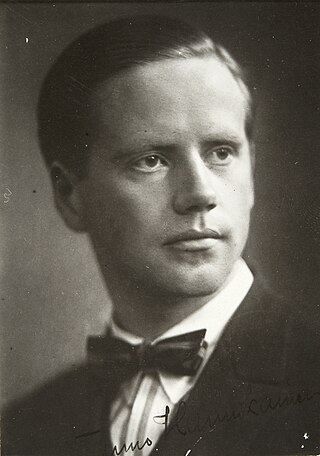
Tauno Heikki Hannikainen was a Finnish cellist and conductor.

Sampo is a 1959 Soviet–Finnish fantasy film based loosely on the events depicted in the Finnish national epic Kalevala. In the United States, it was released in an edited version, The Day the Earth Froze, by American International Pictures as a double feature with Conquered City. This version was later featured in a 1993 episode of Mystery Science Theater 3000.
This is a summary of the cantos of the Kalevala.
Iku-Turso is a malevolent sea monster in Finnish mythology, best known for appearing in the Kalevala. Nowadays Meritursas means octopus in Finnish, named after Iku-Turso, but originally tursas is an old name for walrus while the more common term is mursu. However, it is more common to see the word mustekala, the name of its Subclass Coleoidea in Finnish, for the octopus.
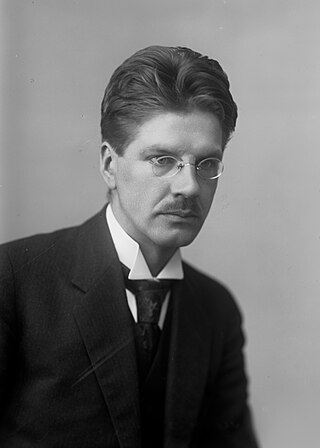
Yrjö Antero Karilas was a Finnish writer. He is most known for his Pikkujättiläinen book series.
The International Uuno Klami Composition Competition is a composition competition. It has been held once in five years since 2004 and it has been named after the Finnish composer Uuno Klami. It is being organized by Kansainvälisen Uuno Klami –sävellyskilpailun kannatusyhdistys ry, which consists of Kymi Sinfonietta and the cities of Kotka and Kouvola, Finland. Kymi Sinfonietta also plays the works in the finals. The main goal of the competition is to bring forward the life work of Uuno Klami and to help improve his international recognition. Moreover, the mission of the competition is to produce new repertoire for sinfonietta-sized orchestras.
Sauli Zinovjev is a Finnish composer. Zinovjev was born in Lahti, and studied composition in Sibelius Academy (2010–15) and in HfM-Karlsruhe (2013–14) under guidance of Tapio Nevanlinna and prof. Wolfgang Rihm. Zinovjev's works are published exclusively by HarrisonParrott's Birdsong Music Publishing.
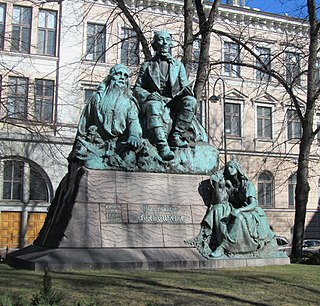
Elias Lönnrot is a monument in Helsinki, the capital of Finland, by a Finnish sculptor Emil Wikström, unveiled in 1902.

The Symphony No. 1 is a four-movement orchestral composition by the Finnish composer Uuno Klami, who wrote the piece from 1937 to 1938. Georg Schnéevoigt and the Helsinki Philharmonic Orchestra premiered the work on 5 May 1939; later that year, Klami enlisted in the Finnish military and fought against the Soviet Union in the Winter War.

The Symphony No. 2 is a four-movement orchestral composition by the Finnish composer Uuno Klami, who wrote the piece from in 1945; it is the final of Klami's two numbered symphonies. Toivo Haapanen and the Helsinki Philharmonic Orchestra premiered the work at the Helsinki Conservatory on 15 December 1946.

Suomenlinna, Op. 30, is concert overture for orchestra written between 1939 and 1940 by the Finnish composer Uuno Klami, who had visited the eponymous island sea fortress. Tor Mann and the Swedish Radio Symphony Orchestra premiered the work in Stockholm on 21 May 1941. The overture is in sonata form, with its main theme in C major and second theme in D-flat major.
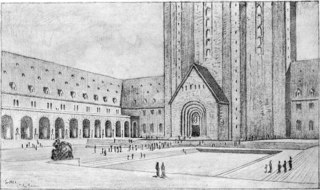
The Kalevala House was a planned huge building designed by Eliel Saarinen for the Kalevala Society in Helsinki, Finland in 1921, which was never built. It was to be built at the top of Munkkiniemi, close to the current Hotel Kalastajatorppa. The Kalevala House was to become not only the premises of the Kalevala Society, but also a center of Finnish culture: it would have included a Finnish cultural research institute, exhibition spaces, artists' workspaces and "research chambers". In addition, Finnish great men and Fennomen would have been buried in the crypt at the foot of the 80-meter-high main tower.
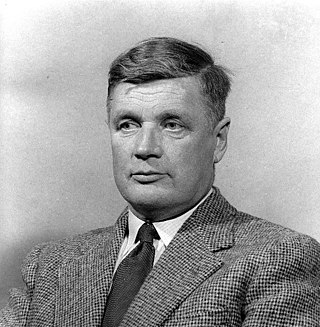
The Violin Concerto, Op. 32, is a three-movement concertante composition for violin and orchestra written from 1940 to 1943 by the Finnish composer Uuno Klami. The piece premiered on 29 October 1943 in Helsinki, Finland, with Toivo Haapanen conducting the Helsinki Philharmonic Orchestra; the soloist was the Finnish violinist Anja Ignatius. However, in 1944, the autograph manuscript was lost when Ignatius played the concerto in Stockholm. Klami rewrote the piece from 1953 to 1954: this new version he based on the old, albeit with substantial alterations to each of the three movements. On 9 April 1954, Ignatius, Haapanen, and the Helsinki Philharmonic Orchestra premiered the revised concerto.











